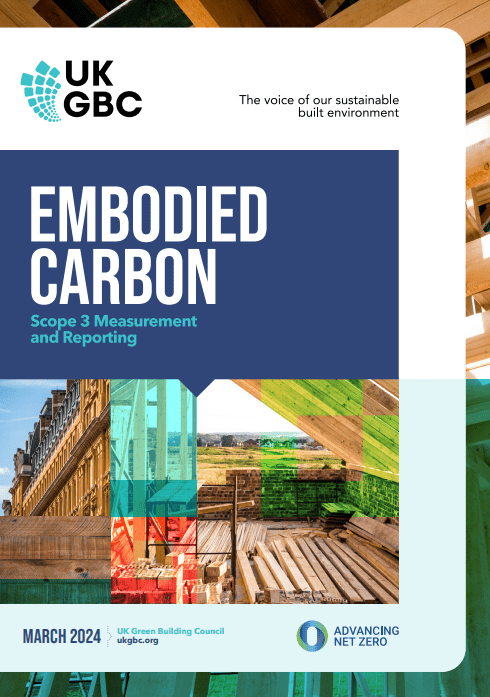Embodied Carbon. Scope 3 Measurement and Reporting

This guidance provides an overview of the overlap between Scope 3 reporting and embodied carbon assessments and shows how establishing a coherent link can support strategic emission reduction efforts.
This is shown through the three main sections, as described below.
Firstly, the guidance shows how using embodied carbon assessments directly within Scope 3 reporting could represent a more effective solution when compared to the traditional spend-based approach.
This is due to the use of LCAs and EPDs within embodied carbon assessments, which can be more accurate than activity-based emissions factors.
Additionally, undertaking emissions assessments at project level and allowing those results to be fed into the Scope 3 reporting of multiple organisations would reduce multiplication of workload.
Secondly, this guidance explores the concept of ‘yearly embodied carbon’, which involves quantifying embodied carbon on a yearly basis throughout the construction phase of a project. This could reconcile the time-based disparities between Scope 3 reporting
and embodied carbon assessments (as-built embodied carbon assessments are undertaken at practical completion, whereas Scope 3 reporting takes place annually).
Thirdly, the guidance discusses architects, engineers, and other professional service providers, and states that the ‘designed embodied carbon’ (that is, the embodied carbon of assets that they have designed) is not within their Scope 3 emissions. Nevertheless, it is important that such organisations take responsibility for their work and are held accountable for the emissions
that they impact through their services. Therefore, it is recommended that architects and engineers do report the embodied carbon of their designs, but through a separate mechanism from the GHG Protocol. This could be a ‘Projects Report’: existing examples of which will be shown and discussed.
Overall, this guidance highlights how embodied carbon assessments can support and improve the understanding of Scope 3 emissions across the built environment. However, UKGBC recognises that for embodied carbon assessments to be used within
Scope 3 reporting, would require such assessments to be undertaken across all projects, representing another reason why the call for mandating whole life carbon assessments through regulation is so strong.
